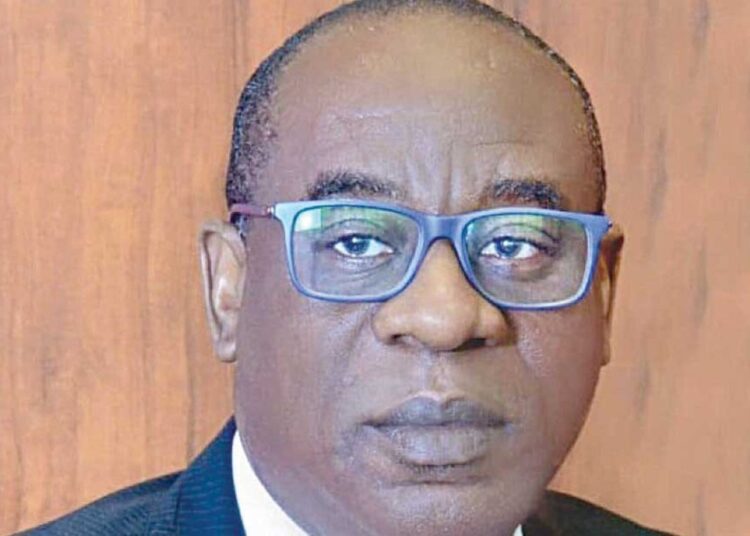In line with the global trend of rate hikes by central banks, the Monetary Policy Committee (MPC) of the Central Bank of Nigeria (CBN), last week, rose from its meeting, announcing a 25 basis points hike in benchmark interest rate to 18.75 per cent.
This has been seen by industry watchers and analysts as a move in the right direction in an effort to curb the continually rising inflation in the country which has so far risen to 22.41 per cent. According to analysts, the decision to maintain a hawkish stance is expected to cut back on liquidity and thus bring inflation under control in the country.
Addressing journalists at the end of the meeting last week, the acting CBN governor, Folashodun Shonubi explained the previous rate hikes by the apex bank had helped in moderating the rate at which inflation rate has been rising in the country.
“I believe in previous MPC as we had indicated and shown that every time we have had a rate increase, it has actually moderated the rates of inflation. But that’s not all that we’ve been doing.
“During this MPC, we had quite a lot of time talking about inflation, talking about the various tools and mechanisms that we could use to manage inflation. We agreed that one of the key challenges now was liquidity overhang and we needed to look at the various tools we had.
“In addition to interest rate hikes, we’ve also come up with various ways to tighten the liquidity because we believe that if the liquidity surfeit actually runs across not just inflation, but also has some impact on the exchange rates and other parts of the economy. So, I can confirm that it is not only rates changing, that we’re looking at how to moderate inflation, we’re looking at every tool in the box that would help us reduce liquidity and that should have a positive impact on reining in inflation,” he pointed out.
Analysts at Afrinvest West Africa, following the trajectory of key global and domestic macroeconomic variables since the last policy meeting on May 23 and near-term expectations, MPC announced a further hike to the Monetary Policy Rate (MPR) making it the eighth increase in a row.
The MPC had also adjusted the asymmetric corridor around the MPR to +100/-300bps (from +200/-700 bps), and left the Cash Reserve Ratio (CRR) and Liquidity Ratio (LR) unchanged at 32.5 per cent and 30 per cent, respectively, the said.
Afrinvest analysts further noted that the modest hike in MPR and the tinkering around the asymmetric corridor are welcome developments given the sustained hawkish posture of Central Banks in Advanced Economies (AEs) and the current high headline inflation and average system liquidity narratives locally.
“In addition, we think that the firm stand of the MPC to further tighten policy variables (amid the runaway inflation debacle) at a time when the new fiscal authority is rooting for a lower interest rate environment suggests that the current leadership at the Apex Bank may likely prioritise the Bank’s core mandate of price stability – a positive deviation from the ‘unnecessary romantic’ fiscal and monetary authority relationship under Godwin Emefiele,” they stressed.
To analysts at Cowry Assets Management, while the decision for a slower tightening was not unanimous, the choice to raise rates was influenced by ongoing global and domestic economic uncertainties, elevated general price levels, and the need to support economic growth.
At the end of the meeting, four members had voted for a 25 bps hike, two preferred a 50 bps increase, while five members advocated keeping rates unchanged.
Noting this trend, analysts at Cordros Research postulated that the committee will likely tilt towards leaving the rates unchanged at its next meeting.
“The meeting’s voting pattern and the acting CBN governor’s stance on using other policy options available to the CBN other than the MPR to tame liquidity surfeit in the economy suggest to us that the MPC will likely keep the MPR unchanged at its next meeting on 25 and 26 September,” Analysts at Cordros stated.
Analysts at Cowry Assets, whilst noting that the hike in interest rates shows the CBN’s dedication to controlling inflation, boosting investor confidence, and maintaining price stability to safeguard consumer purchasing power, stated that, it is however essential to be mindful of the potential drawbacks, as the rate hike could lead to challenges for businesses seeking to borrow money, potentially slowing output growth and raising the unemployment rate.
“Regarding implications for the financial sector, we anticipate banks to benefit from the high-interest rate environment, leading to improved net interest margins due to higher asset yields. On the other hand, we may also witness an increase in credit impairments and a deceleration in loan growth as banks tighten their risk management frameworks. Furthermore, investors holding assets sensitive to interest rate variations, such as treasury bills and bonds, will likely experience increased yields based on the liquidity conditions in the system,” they noted.
Analysts at Cordros Research likewise noted that, while the purpose of reducing the asymmetric corridor around the MPR is to incentivise banks to deposit more with the CBN and reduce banking system liquidity, the current maximum amount the banks can place with the CBN on an overnight basis pose as a downside risk to the effectiveness of using the asymmetric corridor to reduce banking system liquidity.











